Clownfish are some of the most recognizable (as Amphiprion Percula) and beloved creatures in the ocean, thanks to their vibrant colors, distinctive patterns, and captivating behavior. These small but fascinating fish are known for their distinctive orange coloration and close association with anemones and have become an iconic symbol of the coral reefs and their inhabitants. This article will show you some interesting information about clownfish and some popular types too such as ocellaris, onyx picasso clownfish.
What Is Picasso Clownfish?
Clownfish are fish that are thought to have gotten their name from being able to look like clowns at a circus. They get the Picasso nickname because of the abstract coloring present on their bodies. Picasso Clownfish are peaceful fish that is generally friendly and familiar with anyone around it. It can also be found in a Disney film, which may partially explain its popularity, as well as the bright colors of this fish.
Whether you’re a seasoned aquarist or a casual observer, there’s no denying the appeal of these fascinating creatures, whose unique adaptations and behaviors have made them popular both in the wild and in captivity. With a wealth of interesting facts and intriguing stories to tell, clownfish are the perfect subject for anyone looking to learn more about the diverse and dynamic world of marine life.
How is clownfish appearance?
The Picasso Clownfish resembles other varieties of this species in size and shape. The most obvious difference is that the Picasso Clownfish usually tops out at around three inches whereas other varieties grow a little bigger.
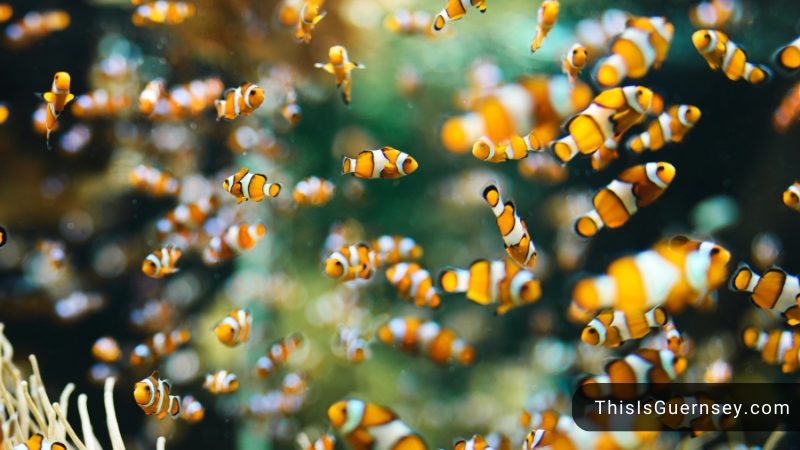
Unlike many other fish, the Picasso has two dorsal fins. The first is a scalloped spiny dorsal fin and the second is a smooth soft dorsal fin. Picasso’s fins all have an appearance similar to that of a boat rudder with black edges.
Picasso Clownfish- color and pattern-wise, these fish are much like other clownfishes. They sport a vibrant orange with the darkest black as well as white. What is different about them, though, is that their patterns aren’t the normal stripes or patches but rather unique designs not seen in other varieties of clownfish.
In the wild, Picasso Clownfish are graded on their markings and how prominently white coloring appears. They can range from grades of premium down to standard. Differentiating between market prices for these various grades of fish is important if you want to earn a profit by auctioning your catch in the future.
The Picasso Clownfish is said to have a white stripe connecting the main body to the rear stripe. This connection provides a great deal of detail in how it should be painted, but does this make for an objectively high-quality fish? I’m not sure if any type of fish can be graded as A+ since one person may prefer less or more white.
How long is a clownfish’s lifespan?
The lifespan of a clownfish can vary depending on the species, but on average, they live between 3 to 5 years in the wild. In a captive environment, such as an aquarium, with proper care and water quality, clownfish can live up to 8 years or more. Factors such as genetics, diet, water quality, and overall stress levels can all play a role in determining the lifespan of a clownfish. It’s important for aquarists to provide the proper conditions for their clownfish to ensure a healthy and long life, including a varied diet, regular water changes, and stress-free surroundings.
Are People Breeding Clownfish For Profit?
Yes, people do breed clownfish for profit. Clownfish are popular among aquarium hobbyists and marine aquarium enthusiasts, and there is a growing demand for captive-bred clownfish as opposed to wild-caught specimens.
As a result, there are breeders who specialize in producing high-quality, captive-bred clownfish for sale to the pet trade. Breeding clownfish can be a lucrative business, as prices for captive-bred clownfish can be significantly higher than those for wild-caught specimens, particularly for rare or unique species or strains. To be successful in breeding clownfish for profit, it is important to have a good understanding of clownfish biology, nutrition, and care requirements, as well as the market for clownfish and the competition within the industry.
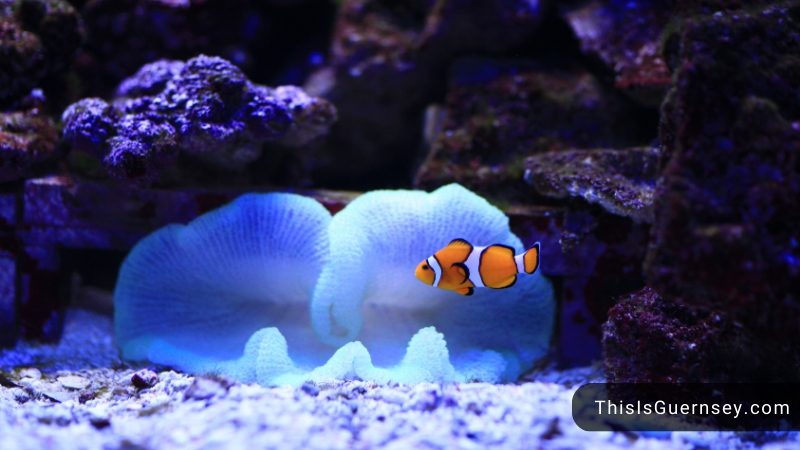
How Often Do Clownfish Lay Eggs?
Clownfish lay eggs on a regular basis, usually once every 7 to 10 days. The exact frequency of egg-laying can vary depending on the species of clownfish, their overall health and well-being, water conditions, and other factors.
Female clownfish lay their eggs on flat surfaces, such as rocks, live coral, or the base of the anemone in which they reside. The male clownfish will then fertilize the eggs and guard them until they hatch. Once the eggs hatch, the parents will continue to care for the young until they reach maturity and become independent. In a captive environment, such as an aquarium, it is possible to manipulate the water conditions and other factors to encourage regular egg-laying and successful breeding of clownfish.
Black Onyx Clownfish
The Black Onyx Clownfish, also known as the Picasso Percula Clownfish, is a relatively new and rare species of clownfish that has gained popularity among aquarium enthusiasts. This species is characterized by its solid black coloration, which makes it highly sought after for its unique and striking appearance. Unlike other clownfish species, the Black Onyx Clownfish does not display any typical orange, white, or black stripes or patterns.
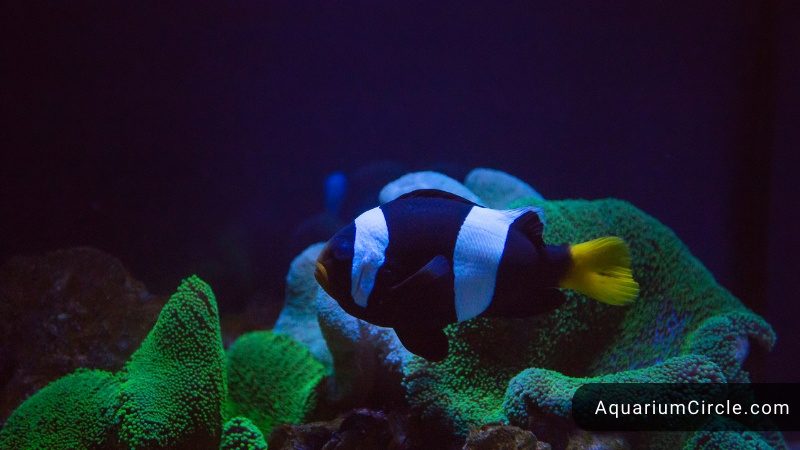
The Black Onyx Clownfish is a captive-bred species and is produced through selective breeding programs. This species is still relatively rare and can be difficult to find in the pet trade, and as a result, it is often more expensive than other species of clownfish.
In terms of care, the Black Onyx Clownfish has similar requirements to other species of clownfish. It requires a well-maintained saltwater aquarium with proper water quality, a balanced diet, and plenty of hiding places and hiding spaces. The Black Onyx Clownfish is also known to be hardy and resilient, making it a good choice for hobbyists who are looking for a unique and visually striking species of clownfish.
What Are The Most Expensive Clownfish?
Clownfish is highly sought after. The most expensive clownfish can vary, but some of the most highly sought-after variants that are known for their unique color patterns, rarity, and popularity among aquarium enthusiasts can fetch high prices. Here are a few examples of some of the most expensive clownfish:
- Platinum Percula Clownfish – This species is known for its solid white and black coloration and can fetch prices ranging from $500 to $800.
- Snowflake Clownfish – This species is recognized for its white-spotted black pattern, and prices can range from $150 to $300.
- Lightning Maroon Clownfish – This species is known for its vibrant maroon coloration and can sell for prices ranging from $200 to $400.
- Picasso Clownfish – This species is recognized for its unique, irregular black markings, and prices can range from $200 to $400.
- Orange Storm Clownfish – This species is characterized by its bright orange coloration and can sell for prices ranging from $200 to $400.
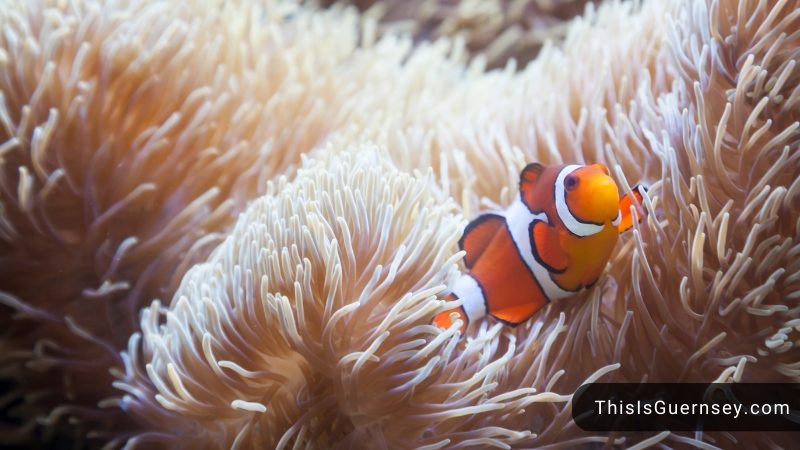
It’s important to note that the prices of these species can vary depending on the source, and some factors such as the popularity of a specific strain, the location of the seller, and the overall demand for the species can affect the price.
The Best Clownfish Breeding Tank Setup & How To Care
Decor-wise, Picasso clownfish are reef compatible and do well in aquariums that are fish-only, community, slightly aggressive, or have live rock. They also love anemones.
Picasso clownfish, particularly fond of the genus Heteractis and Stichodactyla anemones, can be difficult to pair together. The trick is to leave your Picasso to find it on its own. Even though this process takes time. Trying to force a pairing will stress out your Picasso too much and result in a shorter lifespan.
Tank Set Up
Watch more in this video below.
It’s important to keep an eye on your Picasso and see how they’re reacting to the tank set up- especially if you’ve just introduced them to it. If there are issues that can’t be helped with water parameters or decors changes then remove the Picasso from its current environment as soon as possible.
When deciding on a Picasso Clownfish it is best to buy captive-bred specimens because their survival rates are higher and they’re easier to adjust to their new environment since they have already grown in size. The usual purchase size for Picassos aged approximately 7–8 months should be 3/4 – 1 ¼ inches. This age is when Picassos are usually captive-bred.
How to care
When acclimating a Picasso Clownfish it is best to use the drip method as this will ensure they do not go into shock. To do this, place the Picasso and its bag water into a clean bucket with a drip line dripping in tank water slowly over time.
After 30 minutes of soaking in copper water, you can net your Clownfish and place them in the waiting aquarium. Be sure to not pour bucket water into the aquarium as it contains unwanted substances.
Once in your aquarium, your Picasso Clownfish may go into hiding for a couple of days. This is normal behavior and nothing to worry about. Just keep an eye on them for any signs of distress and offer them food when they eventually do leave their hiding place.
Regular aquarium maintenance should be performed once a week that includes replacing 25% of the water and cleaning parts of the tank. Failing to do so may result in ich or fin rot which are almost always caused by bad water quality.
FAQs
Are clownfish peaceful or aggressive?
Picasso Clownfish are a peaceful species, with one exception. They may attack other fish and even your own hands when they have eggs or are in their anemone. More often than not, Picasso’s Clownfish are very friendly and engaging. Not only will they follow you as you walk by their aquarium, but they will do it endearingly. Picassos don’t swim like other fish; rather they tend to waddle slowly making them look like a pet dog that is pleased and excited to greet you!
Where do Picasso clownfish come from?
They are native to the Indo-Pacific region, specifically in the waters surrounding Australia, Southeast Asia, and the islands of the Pacific Ocean or Papua New too. They are typically found in shallow waters near coral reefs and are known to form symbiotic relationships with sea anemones.
What is the rarest clownfish?
The rarest clownfish is subjective and can vary based on the availability and popularity of the aquarium trade. However, some species of clownfish are generally considered to be rarer and more difficult to find than others. Some examples of rare clownfish include Gold Striped Maroon Clownfish, Whitebar Clownfish, Cinnamon Clownfish, and Orange Skunk Clownfish.
How much Picasso clownfish?
It’s about $200 to $400.
References
- Clownfish – https://en.wikipedia.org/wiki/Clownfish
- Clownfish – https://www.nationalgeographic.com/animals/fish/facts/clownfish

Annette M. Chaney is an experienced marine biologist with over 20 years of experience as an aquarist and fishkeeper. She started her first aquarium at a young age, filling it with frogs and goldfish obtained from the ten-cent pet store.
Annette grew up caring for and breeding African Cichlids, which led to a hobby in high school that doubled as a profitable means. Attending Reed College gave her time to solidify herself as an accomplished aquarium caretaker with an eye for sales. After that, from 2009 – 2013, she studied at Roger Williams University – one of the most prestigious universities for Aquaculture and Aquarium in USA. She is the founder of AquariumCircle since 2010.
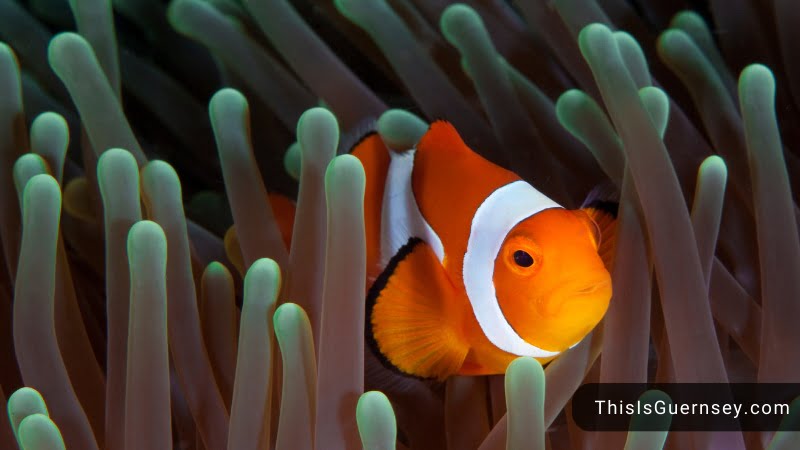
Howdy Ms.Chaney. Enjoyed your video and the info you gave regarding my new Clownfish pair I got last month. Waiting on an Aneome for them to “accept” ( unk if correct or just PAIR) with. Was wondering if they will do well with Angelfish? Which would you recommend for my 70 curved tank? Thanks. Rick H.
PS MERRY CHRISTMAS!